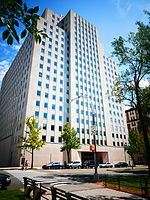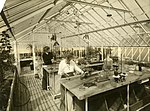Battle of Harlem Heights

The Battle of Harlem Heights was fought during the New York and New Jersey campaign of the American Revolutionary War. The action took place on September 16, 1776, in what is now the Morningside Heights area and east into the future Harlem neighborhoods of northwestern Manhattan Island in what is now part of New York City. The Continental Army, under Commander-in-chief General George Washington, Major General Nathanael Greene, and Major General Israel Putnam, totaling around 9,000 men, held a series of high ground positions in upper Manhattan. Immediately opposite was the vanguard of the British Army totaling around 5,000 men under the command of Major General Henry Clinton. An early morning skirmish between a patrol of Knowlton's Rangers and British light infantry pickets developed into a running fight as the British pursued the Americans back through woods towards Washington's position on Harlem Heights. The overconfident British light troops, having advanced too far from their lines without support, had exposed themselves to counter-attack. Seeing this, Washington ordered a flanking maneuver which failed to cut off the British force but, in the face of this attack and pressure from troops arriving from the Harlem Heights position, the outnumbered British retreated. Meeting reinforcements coming from the south and with the added support of a pair of field pieces, the British light infantry turned and made a stand in open fields on Morningside Heights. The Americans, also reinforced, came on in strength and there followed a lengthy exchange of fire. After two hours, with ammunition running short, the British force began to pull back to their lines. Washington cut short the pursuit, unwilling to risk a general engagement with the British main force, and withdrew to his own lines. The battle helped restore the confidence of the Continental Army after suffering several defeats. It was Washington's first battlefield success of the war. After a month without any major fighting between the armies, Washington was forced to withdraw his army north to the town of White Plains in southeastern New York when the British moved west into Westchester County and threatened to flank Washington further south on Manhattan. After two defeats Washington retreated west across the Hudson River.
Excerpt from the Wikipedia article Battle of Harlem Heights (License: CC BY-SA 3.0, Authors, Images).Battle of Harlem Heights
Riverside Drive, New York Manhattan
Geographical coordinates (GPS) Address Nearby Places Show on map
Geographical coordinates (GPS)
| Latitude | Longitude |
|---|---|
| N 40.811944444444 ° | E -73.963611111111 ° |
Address
Riverside Church
Riverside Drive
10115 New York, Manhattan
New York, United States
Open on Google Maps








